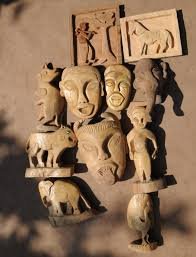Nestled within the heartlands of Madhya Pradesh, amidst verdant landscapes and ancient traditions, resides the Kol tribe, a vibrant community steeped in history and culture. As the second-largest tribe in Madhya Pradesh, following the Gonds, the Kols’ presence extends beyond state borders, with communities also found in Uttar Pradesh, Bihar, Odisha, and Maharashtra. However, it’s in the regions of Rewa, Sidhi, Satna, Shahdol, Jabalpur, Umaria, Anuppur, and Mandla in Madhya Pradesh where the Kol tribe flourishes, particularly in the villages of Pharenda and Kurali in the Rewa district.
The rich tapestry of Kol heritage finds mention in ancient texts like the Rigveda, weaving a narrative of resilience and continuity through the annals of time. Anthropologically classified under the Kolarian or Munda group, the term “Kol” itself denotes humanity, reflecting the essence of their identity. Despite the passage of centuries, the Kols’ connection to their ancestral roots remains steadfast, evident in their language, customs, and collective memory.
Legends shroud the origins of the Kol tribe, with myths intertwining with the fabric of their existence. Whether born from the celestial touch of Kamdhenu, the heavenly cow, or emerging from the body of King Vena, the Kols’ genesis reflects a synthesis of myth and reality, echoing the cyclical nature of life itself.
Central to Kol societal structure is the village panchayat, governed by traditional posts such as Mahto, Barua, Bhuihar, Ojha, Panda, Dewar, and Niutiya. The Mahto, or Chaudhary, assumes leadership roles, overseeing communal affairs and dispute resolution. Meanwhile, the Niutiya fulfills the vital role of communication, ensuring the cohesion of the community through shared joys and sorrows.
Architecture mirrors the Kol tribe’s intimate relationship with nature, with houses crafted from mud, grass, and straw. The layout of Kolhin Tola, where houses face each other, fosters a sense of kinship and camaraderie. Cattle, revered as integral members of the household, find sanctuary in dedicated spaces within Kol dwellings, underscoring the symbiotic bond between humans and animals.
Despite the winds of change, the Kol tribe’s customs and rituals endure, albeit influenced by the cultural mosaic of their surroundings. While festivals and marriages may bear the imprint of local traditions, the adornments worn by Kol women serve as poignant reminders of their tribal heritage, preserving a link to their ancestral past amidst a rapidly evolving world.
In the realm of artistry, names like Budhsen, Shivprasad, and Ramgarib stand as custodians of Kol creativity, their works reflecting the essence of Sidhi’s cultural landscape. Through their art, they channel the spirit of their ancestors, infusing contemporary life with echoes of bygone eras.
As the world marches forward, the Kol tribe stands as a testament to the enduring legacy of indigenous cultures. Their stories, woven into the fabric of Madhya Pradesh’s history, serve as a beacon of resilience and cultural richness, inviting all to marvel at the timeless tapestry of Kol heritage.


